It’s a love that many of you share with me…. Antique Linens. A collection of antique linens doesn’t take even close to as much space as most other collections, and there is nothing as lovely as sleeping in a bed covered in luscious linens hand embroidered long ago, or setting a table with linens from a Bridal Trouseau so beautiful it almost makes you weep.
Our customers usually buy a few showcase pieces, like Antique Euroshams with Laces, or a top sheet with an elaborate cutwork border and a few pillow shams from the 1800’s, so their bed has one gorgeous outfit.
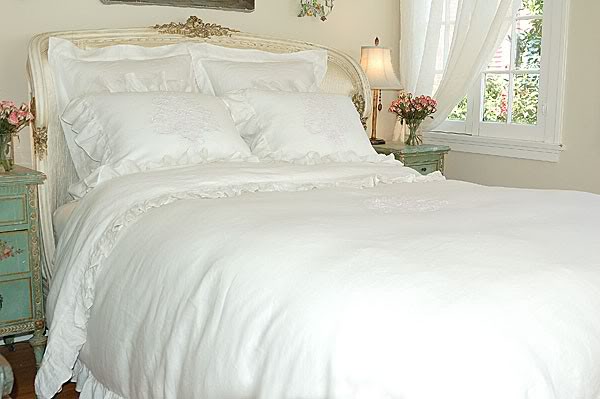
Antique Linens don’t have to match, it’s much more fun to have a “collected” look, pieces that work well together, but not really “matchy matchy.” Above is a bed showcasing new Linen Duvets and Shams that we sell from Papillon Linens, these mix so wonderfully well with antique pieces.

I get so many emails asking how to take care of the linens you buy from us. Mostly, about the ironing. Since the Chinese invented “ironing” thousands of years ago, we have come to accept that most linens look better when “smoothed” out. Ironing can be quite a chore, but it can also be a relaxing joy. Here are a few of my best tips for helping to iron and keep your antique Linens looking their best.
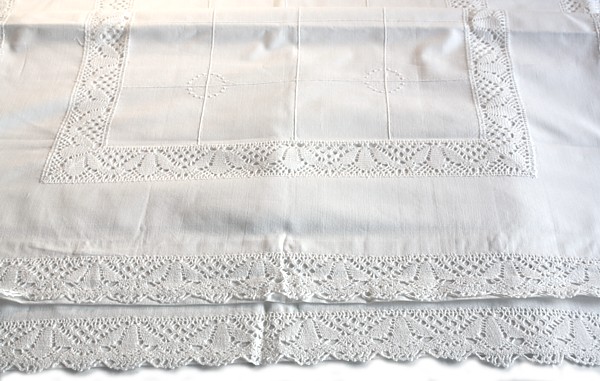
1. Buy the best iron you can. This sounds obvious, but really isn’t. I’ve gone through many irons that just didn’t perform. They didn’t get hot enough. There are plenty of good irons to buy, do some checking and don’t settle for one that’s 19.99, that’s probably not going to be the one to use on your antique linens with the best results.

2. Your #1 goal in ironing is to iron your item completely dry. Completely. If you leave them even slightly damp, linens happily get wrinkled again as they dry up. Making it a frustrating experience. So turn off your steam option when ironing antique linens. This way you will not get any accidental “seepage” from the steam vents, and since steaming puts more moisture into cloth, not less, it just makes sense.
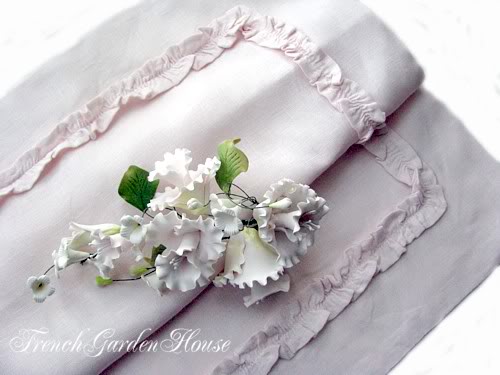
3. Try to time your ironing so that your pieces are still damp. This will make it much easier to press out wrinkles. I have a spray bottle of water handy, spray the piece and roll it up in a little bundle, just like my Grandmother used to do. I leave the little bundles at the edge of my ironing board until it’s “their” turn.
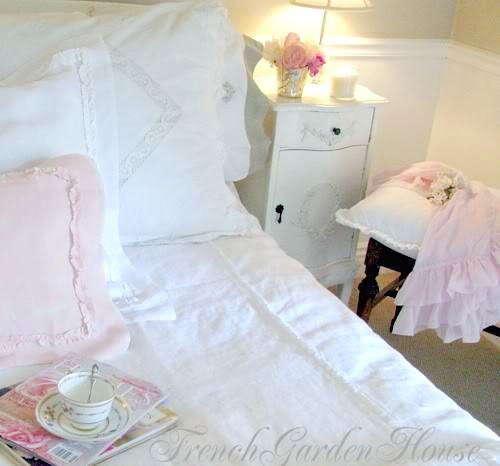
4. Try this wonderful trick: roll your piece up, put it into a white plastic trash bag and put this in your freezer, or refrigerator overnight. If you live somewhere where it’s freezing cold, you can also leave it outside during the winter months.
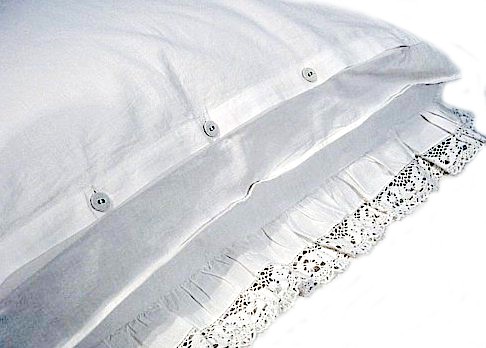
5. Cover your moistened linens with plastic. You can put your moistened linens in your laundry basket and cover them with a piece of clean plastic {from the dry cleaners} to keep them from drying out until they are ready for ironing. This doesn’t mean you should keep them in there for days, this is for when you are actually going to be ironing them that day.
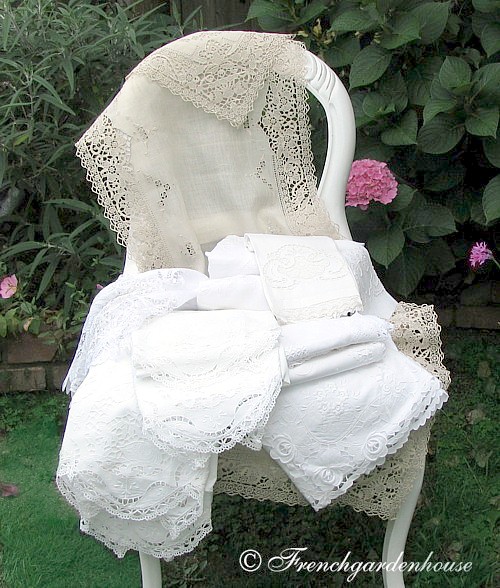
6. Iron on the wrong side of the fabric. Always try to iron on the wrong side of the fabric. For embroidery, lay a white terry towel on the ironing board, and press the piece upside down. You want to fluff up the embroidery, not flatten it down. Doing this upside down also avoids catching the tip of the iron in the delicate embroidery work.
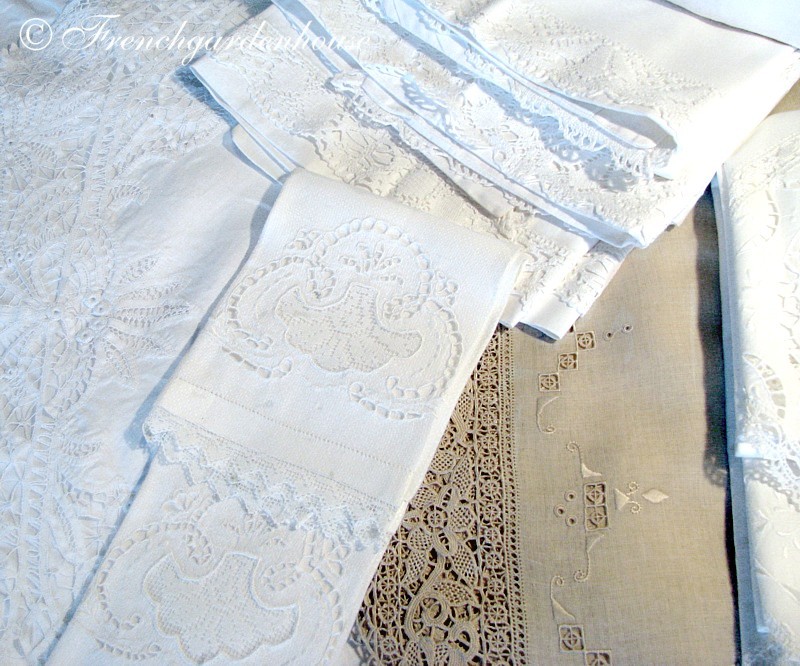
7. Iron at the hottest temperature you can. Be careful not to scorch linens, but Cottons and Linens can be ironed quite hot. Make adjustments for silks and other fabrics, of course. All good irons have great temp indicators.
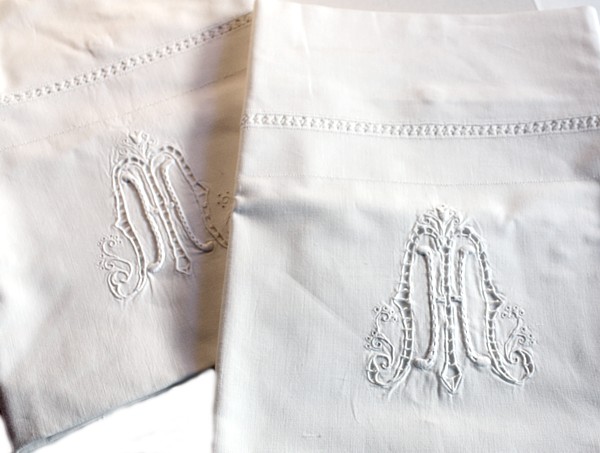
8. Don’t iron in creases. This can actually break the threads. Just turn over and run your thumb over it, this is called finger pressing and gives a crease, but doesn’t damage the threads and fibers.
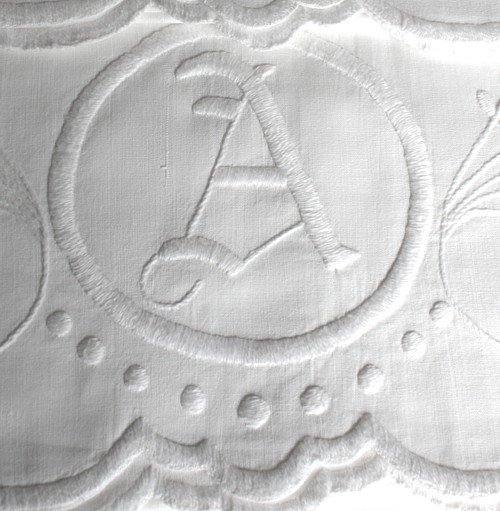
9. Hang your ironed pieces up ’til they are totally dry. After you have ironed, hang your linens up on a drying rack until any residual moisture has a chance to evaporate completely. You can drape linens on the backs of chairs, over your towel bars, flat on your guestroom beds, whatever works for you, as long as you let them “rest” for a while. Then store them.
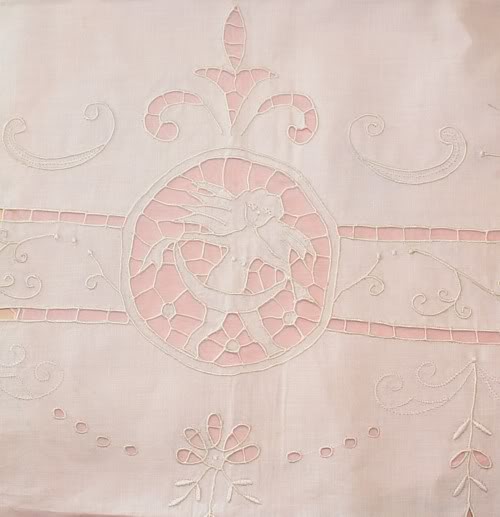
10. Don’t ever press over a stain or spot. This pretty much sets that stain for life. Spot treat, or wash again if you notice a stain you missed while ironing your piece. Better a little more work than ruining your favorite!
I hope that this helps you as you press and iron your beloved linens. I am always more than in awe of the antique linens we sell at FrenchGardenHouse. The skill, patience and love that women so long ago put into these fabulous pieces of history are awe inspiring. I feel so blessed to be able to dress our own beds {and tables} at home with these old glorious pieces. I hope you all love the linens you purchase from us, and hand them down to generations to come.
images: FrenchGardenHouse.com, Papillon Linens
If you want to romance your Home and Garden with antique and vintage treasures to make you smile each time you come home, visit our shop FrenchGardenHouse.

 Your Cart
Your Cart
Great advise, Lidy! I feel very honored that you included some of my (new) linens mixed in with the antiques! No greater compliment for me, than that!
Leigh, your duvets and shams are the best! I love love love the ones we use at home. I know our customers are always thrilled when they use them and keep them forever, they just keep on getting better and softer.
Such great tips Lidy! I would love to know what iron you are currently using.
Right now my iron is a Rowenta Autosteam. {I don’t use the steam for the linens, but DO for everything else!}
Some of the best advice ever! I usually try to avoid ironing, but I always enjoy pressing my vintage linens!
I have a great love for antique linens. They are precious materials, especially when they are handed down within families. I have a friend whose family has a cherished christening gown that has been used from generation to generation. Each child’s name and baptismal date was sewn into the inside of the gown. This keepsake is a real piece of history for them. Thanks for sharing your very interesting post.
http://www.skylarkmanor.com
They are so beautiful. I have a few,but never want to use them as they are so hard to do up. My big tablecloth is so long I iron it at the top of my stairs and let it hang over as I go and then roll it on a big cardboard tub so it will not have seems. So has to be very special day before I use it. Kinda sad, but thats the way it is. Thanks for sharing, Richard at My Old Historic House
Richard, I’m smiling thinking of you ironing at the top of your stairs! That must be a very long cloth, and I don’t blame you for only using that for special occasions. I don’t use my very intricate cloths as much as I would like to for the same reason, but the others are fun to use more often, the ones that aren’t quite as much work.
Lidy,
Aren’t these linens dreamy? My mother taught me about the beauty of fine linen. In fact, at 85 years old her bedroom is the kind that takes your breath away. Everything looks so lovely.
It’s a beautiful sunny and breezy day here in New England, wish I had a washline filled with white linen hanging to dry.
Karen
I’m loving all those beautiful linens and the ironing tips were really useful., thankyou. Have a very Happy Easter, love Linda x
They are so beautiful. I have a few, but never want to use them as they are so hard to do up. My big tablecloth is so long I iron it at the top of my stairs and let it hang over as I go and then roll it on a big cardboard tube so it will not have seams. So it has to be very special day before I use it.
Thanks so much for the information, I do have a thing for vintage linens I am truly drawn towards them. So any information on vintage linens are appreciated. I have to say you have wonderful information and a lovely to die for shop! Nancie
I just purchased a new ironing board. It is nice and wide, just perfect for tablecloths. One thing that bothers me is that the pad is lined with foam. It is nice and soft, just like putting a towel on the board, but wondering if the chemicals in the foam would have a reaction with the heat of the iron and if the chemicals would be detrimental to my antique linens.
Shirley, I have that same foam, and I have not noticed any detrimental reaction to antique linens. If you are worried it might, I suggest you iron over a folded over piece of white flannel, or a towel.
Thanks so much for the information.. thanks got the tip about the terrycloth towel. I always iron on the wrong side too. Is it ok to use starch on napkins, tablecloths, etc.
thanks
Patsy, the use of starch is highly personal. Some people love it, others avoid it at all costs. I would just be careful not to use too much if you are spraying it on. It can make your iron sticky, and eventually that sticky residue can leave marks on your linens.
I place a thick blanket(doubled) on the wide island in the kitchen. I would love to have a large pressing machine but i wonder if you can place a thick towel or blanket on the bottom.
Hi, I hope someone can help me, I have a couple of old cut work table cloths that I have laundered and pressed damp but it is as if the cutwork sections have tightened up or shrunk and I cannot get the table cloth flat! They just do not look good now when laid out!
Advice please
Loraine, what a shame. Do you think that there is any way that the cloth shrunk in parts? The best advice I can give you is to iron it without water, so dry, and see if you can press the areas that are “lumpy” flat. I’m so sorry.